Events and excursions, Autumn 2012
STAPLEFORD, ATTENBOROUGH AND MELBOURNE: Thursday 2 August 2012. Leader Alan Langton.
Our day began with a visit to Stapleford parish church where Keith Goodman gave us a useful introductory talk about the church and also about the famous Saxon cross in the churchyard. The interior of the church itself has been tastefully modernized without spoiling the old character of the building.
After refreshments served at Stapleford we went on to Attenborough church with its 500 year old tower and the fourteenth century doorway and ancient door. After more welcome refreshments we proceeded to Melbourne Hall where we were warmly greeted by some very efficient and knowledgeable guides. The Hall looks over a 20 acre mill pond, and is surrounded by delightful parkland and gardens.
Sir John Coke originally made Melbourne his home in 1629, and his descendants, Lord and Lady Ralph Kerr, live today in their delightful lived-in home. In Queen Victoria’s reign the Hall was the home of one of her Prime Ministers, Lord Melbourne, who gave his name to the city of Melbourne in Australia.
We enjoyed a full and excellent tour of the rooms with their many paintings and portraits and immaculate furniture, before enjoying a lovely tea in the visitor centre. We also had the opportunity to go round the colourful gardens which are the best surviving example in England today of the famous designer Le Note.
We were also welcomed to the spectacular Norman church by the vicar who was justifiably full of enthusiasm for this beautiful building, largely unspoilt and in excellent condition.
DEENE PARK AND STOKE DRY CHURCH: Thursday 6 September 2012
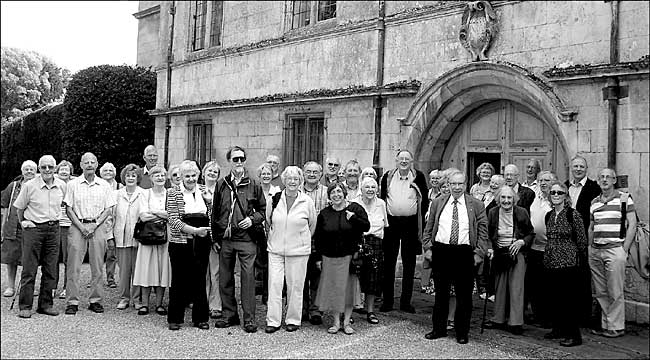
The group at Deene Park.
This visit took place on a beautiful warm day and began with coffee at the Falcon Hotel in Uppingham. We then travelled the short distance to the small church at Stoke Dry. The church contains a number of fascinating wall paintings dating from the 13th to the 16th centuries. In addition there are memorials to members of the Digby family, one of whom was involved in the Gunpowder Plot. Despite being a late-comer to the group he was caught and executed. Members enjoyed looking around, taking lots of photographs and asking many questions of the vicar, the Reverend Jane Baxter, who had given a most interesting talk. She informed us that the church had been saved from closure by an enthusiastic group of volunteers who kept it in beautiful condition and that now two services a month take place there. We also had the pleasure of listening to Alan Langton playing the lovely Victorian barrel organ.
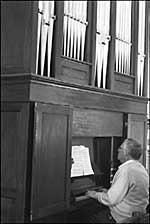
Alan Langton playing the organ at Stoke Dry church.
After a return to Uppinghham for lunch and an exploration of its several bookshops, the party set off for the drive to Deene Park, the home of the Brudenell family since 1514. We were divided into two groups for a guided tour of the house.
The tour began in the great Tudor hall and took us through the centuries as later generations of the family added rooms and wings according to the fashions of their time. We saw some bedrooms still used by family visitors and one lovely bathroom overlooking the gardens and surrounding countryside; definitely a loo with a view! We finally looked round a small museum dedicated to the family’s famous ancestor, the 7th Earl of Cardigan of the Charge of the Light Brigade fame.
After an excellent Thoroton tea there was time for members to visit the local church or to sit in the sun and enjoy the beautiful gardens before returning home.
LECTURE REPORT
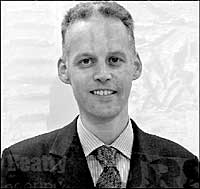
We were very pleased to welcome Neil McNab, Principal Archaeological Consultant to URS Scott Wilson, the company which has undertaken the improvements to the A46, the old Fosse Way, from Widmerpool to Newark. He told us that he considers himself lucky to have been part of the A46 project from the design stage through the Environmental Impact Assessment, Public Inquiry, pre-construction advanced archaeological works, construction phase watching briefs and on to the post-excavation archaeological assessment, analysis and publication.
He reminded us that improvements to this road had been planned pre-war, with the latest ones prior to the current work drawn in the 1990s again shelved. However, we were told that the job this time, under the 2008 scheme, has been done with thoroughness and with consideration for the road’s long history and the archaeology accompanying that history. Research on what might be found and planning for the exploration and possible excavation was undertaken thoroughly, using all means at the archaeologist’s disposal. The company built in time for archaeology but, of course, there were times when unexpected finds appeared which necessitated fast work to investigate and record, even, in some cases, to re-route the planned stretch of roadway.
During the course of the improvements there were major excavations at Saxondale and at Margidunum (last excavated in the ‘60s), both of which proved to be multi-period sites but with many finds of the Roman period, some of them quite amazing. At Farndon there were exciting finds from the Upper Paleolithic, being a rare open air site for the East Midlands, and which resulted in some re-routing of the road scheme. Then there was the Iron Age village at Owthorpe, and EBA round barrow at Stragglethorpe with seven burials within its perimeter ditch, a causeway of timber and pebbles at High Thorpe, an unknown Roman road leading to Bingham and so on.
So many exciting sites were investigated that there is not room here to mention them all and we look forward to reading about the works in due course.
In response to a question, Neil said that the highlight for him was the discovery of an area at Farndon where an Upper Palaeolithic person had knelt to knap a flint, leaving behind a scatter of struck flakes before moving on.
From Neil’s talk we could see that these road works had given the opportunity for so much more to be discovered about the area around and under this important Roman road which has been in use for two thousand years.
Barbara Cast
Society Annual Luncheon, 3 November 2012
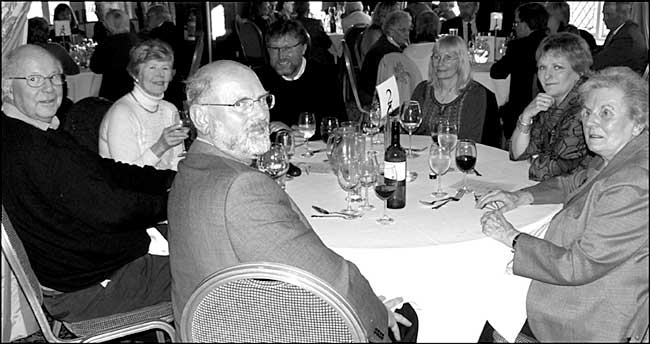
Table 2 at the Annual Luncheon.
This year’s annual luncheon turned out to be very special. Our venue was the Olde Bell Inn at Barnby Moor, a few miles north of Retford and near to some historic roads – the Great North Road and the Old London Road were on our route.
Ye Olde Bell is an attractive coaching inn retaining much of its charm. We received a warm and efficient welcome from the staff and we were delighted with our lunch: many of those attending declared it was the best we had enjoyed for a long time and, as we have had some really good lunches in recent years, that is praise indeed.
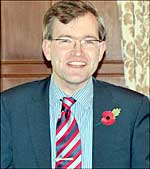
Richard Gaunt
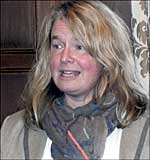
Rebecca Speight of the National Trust
Alan Langton started proceedings with his usual thoughtful grace and we then enjoyed the delicious meal with grateful hearts and friendly talk. After our very generous lunch the toasts were drunk, with our Chair, Professor John Beckett, proposing that to the Queen and Dr. Richard Gaunt that to the Society. Richard reminded us of all the benefits we receive from membership and, in particular for him, the excellent excursions which he has only just begun to go on. He owned up to a terrible habit – that of getting to venues too early and, on the recent trip to Lichfield Cathedral, was asked whether he was attending for the groom or the bride, having arrived well before the Society’s scheduled tour and almost gate-crashing a wedding. Dr. Rosalys Coope responded to his kind words in her usual graceful way and said that she was very pleased to see so many members there.
We then enjoyed a most interesting talk by Rebecca Speight, Midlands Regional Director for the National Trust, on Octavia Hill, one of the founders of the National Trust and a great social reformer, especially in the fields of social housing and in safeguarding open spaces for city dwellers. 2012 was the centenary of Miss Hill’s death. The talk was most enthusiastically received and many questions and comments regarding the NT’s work followed.
This was again a splendid and most enjoyable, sociable time together and, apart from the Chair attempting to burn us all in our seats, very, very successful. (Actually he only caught one of the menus in the flame of the table-light – the fire brigade was not required.
If you weren’t there this year, make a note in your diaries for next year, 2 November is this special date in the Society’s 2013 calendar.
Barbara Cast